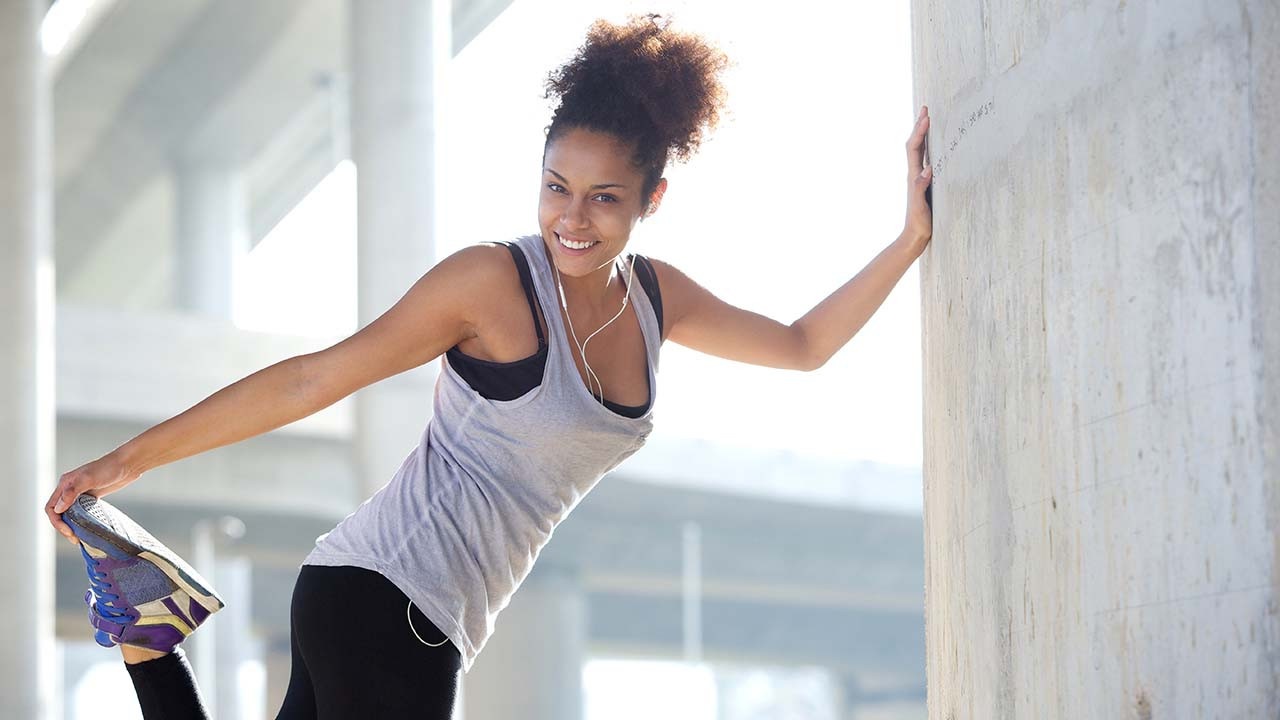Why You Shouldn't Skip Warming Up

Whether you're running late to a group fitness class and have to skip the beginning or you just want to get straight into the meaty part of your workout, there are some very good reasons why you shouldn't give up on ywarming up your body first.
Why warming up is important
Synovial joints - the most common type of joint in the body that includes knees, hips, elbows, neck vertebrae and shoulders - are surrounded by synovial fluid. This fluid helps reduce friction between bones; similar to the way engine oil reduces friction in a car engine.
When you take the time to warm up properly, your body increases production of this fluid to give your joints extra lubrication for the activities ahead.
It also gradually allows your muscles, heart and lungs to ease into the exercise session, as well as helping increase flexibility, and reducing your risk of injury.
Active vs. passive warmups
Active warmup is when you physically move your body to warm it up - for example stretches or smaller versions of the movements you're planning on doing during your workout.
Passive warmup involves heating your body in other ways, such as a sauna, a warm shower or wearing warm clothing. Active warmups are great before intense training, but passive warmups can be useful before exercising in cold weather, or for those who have injuries, who experience repeat injuries or have muscular tightness.
It's important that your body is warm before you do any deep stretching or fast/sharp movements so your muscles are prepped for it (i.e. even yoga routines should start off gentle and gradually build to the more difficult poses!).
What are some ways to warm up?
As mentioned before, you can do a lesser version of the activity you're about to do, working with the same muscles. For example, if you are going to be squatting with weights, you could warm up your lower body by starting with a short walk, then beginning to lift the knees a little higher to warm up the hips, then doing some small squats (i.e. not coming down all the way).
For sports, think about the movements you will be doing. For high agility sports like netball or soccer, it could be useful to start off with a brisk walk, then do a 'T' drill (jogging in the shape of a T - run forwards 10 steps, sideskip left 5 steps, sideskip right 10 steps, sideskip left 5 steps, run backwards 10 steps), followed by some sports-specific moves such as practice kicking or passing with or without a ball.
If you're going for a run, you could initially start walking, then jogging, and gradually pick up the speed as you go.
For an activity like yoga, start with smaller movements, like Bitilasana, or Cat/Cow, and build your way up to more complex or challenging poses that involve a lot of strength or flexibility.
Images / DepositPhotos









